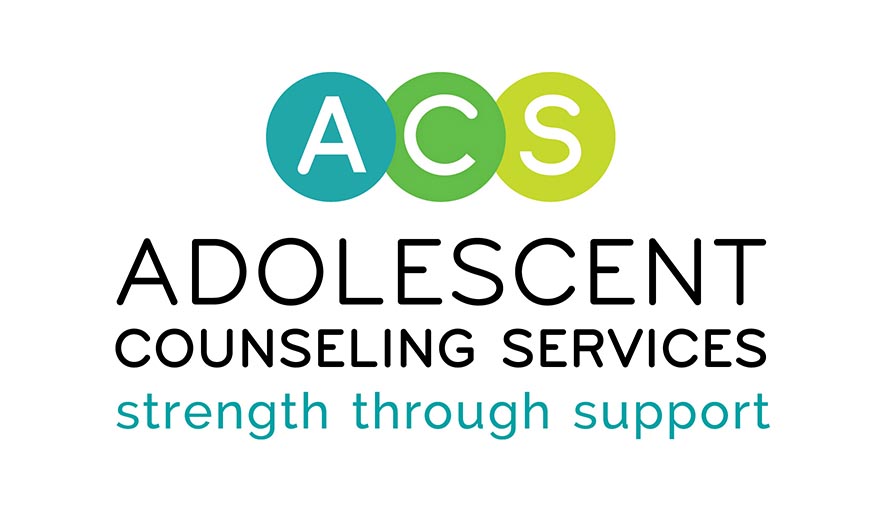
Practicing Mindfulness
Written By: Anna Fitch, Clinical Intern at ACS, On-Campus Counseling Program
what is mindfulness?
Over the past three decades, a movement of mindfulness-based positive psychology has taken the field by storm. As a result, mindfulness has become commonplace within the vernacular of modern-day society. While well-intentioned, mindfulness has become somewhat of a cultural commodity, leading to a dilution of true mindfulness. The question then becomes, what exactly is true mindfulness.
In its fundamental form, mindfulness is the ability to be present in the current moment with an attitude of kindness and curiosity (1). This is what is referred to as mindful awareness, and just like any other skill, it takes practice and dedication. Mindful practices, the vehicle through which we reach mindful awareness, are the exercises we rehearse in order to build the muscle of mindfulness (2).
Mindfulness is not a self-help movement. Rather, it is a science-driven and empirically based research initiative with the primary purpose of discerning how and when people flourish (3). Research has shown the benefits of mindfulness to be far-reaching and long-standing. Mindfulness has been shown to increase happiness and well-being, strengthen our immune system, reduce the symptoms of anxiety and depression, and even lengthen our life span (4-11). This may seem too good to be true, but these benefits are readily achievable through proper mindful practice.
The Power of Neuroplasticity
You may be wondering how this is all possible, and you may even doubt your ability to truly change. Nevertheless, the power of neuroplasticity clearly demonstrates that we all possess the ability to fundamentally alter the structure and function of our brain, no matter our age. Put simply, what you practice grows stronger (8). So, let me ask you, what do you want to grow?
Identifying your intention is the first step to mindful practice. Your intention will dictate the type of practice you will need to do. Through awareness, we can clearly see what the present moment needs. If the present moment is met with suffering, we practice self-compassion, if it is met with stress, we practice equanimity, and if the moment is joyful, we may practice gratitude. In this way, mindfulness does not gloss over the current moment with blind positivity. Rather, it is what allows us to acknowledge the reality of the moment and respond effectively.
There are numerous mindfulness practices, and which practice you implore will depend on the respective moment. I will briefly share a few practices specifically meant to target joy and increase gratitude. While these practices are universally applicable, I also encourage you to search for exercises that pertain to what you personally need in this current moment. With that said, here is a brief exploration into the practice of gratitude.
Gratitude Practices
The first practice is known as a gratitude letter. In this exercise, you are asked to write a letter to someone for whom you feel grateful. Reflect on tangible details you are grateful for in this person. Describe specific moments. Try to include sensory details in your letter, as this will make the practice more potent. You may choose to share your letter with this person or keep this letter for yourself. This is a practice that can be done at any time, and you may even wish to express gratitude to a place, pet, or person who has passed on. The purpose of this practice is to pause and notice the immense love and appreciation that already surrounds you.
The next practice has been appropriately termed “Three Good Things”. This is a daily practice that strengths our ability to notice the positives and decreased our proclivity to only see the negatives. At the end of the day, perhaps just before bed, spend 5-10 minutes journaling about three good things that happened that day. Experiences take roughly 30-90 seconds to encode into long-term memory (1). So, by taking the time to sit with each good thing you are increasing the ability to recall these moments more readily. To make the practice even more effective include sensory details. What did you see, hear, smell, taste, or feel? After regular practice, you will not only have increased your propensity for gratitude, but you will also have a source of joyful moments to call back on in times of need.
The final practice I will share may feel unfamiliar at first, but I have found it to quickly become the favorite practice of many. This is the practice of mudita. Originating from the Pali language, mudita roughly translates to empathetic joy, the practice of sharing your joy with another. So many of us are under the false impression that joy is a limited commodity. We believe that experiencing someone else’s joy will diminish our own. Or conversely, we irrationally assume that sharing our joy will cause jealousy and envy in others. Neither of these could be further from the truth. As the Dalai Lama puts it, there are so many people in this world, it simply makes sense to make their happiness a source of our own. To practice mudita, carve out 8 minutes in your day and find one other person to share joy with. Split the time in half and spend 4 full minutes sharing your joy, and the other 4 minutes receiving the joy of another. Have the person on the receiving end ask, “What brings you joy?”, after each time the speaker shares. As the listener, do not elaborate on their joy, simply take it in and ask again “What brings you joy?”. After half the time is up, the speaker and listener will swap roles and begin the practice again. For the speaker, be as detailed as possible. For example, “The glimmer of fresh morning due on newly cut grass on a crisp fall morning brings me joy”, as opposed to “rain gives me joy”. The first few times you practice this it may be difficult to conjure joy, but with dedication, the joy will begin to effortlessly flow.
While the eventual goal of gratitude practice is to become mindfully aware of life’s joys, we must first learn how to savor these joys through the use of mindful practice. By training the brain to stay with positive experiences, whether this is through letter writing, journaling, or joy sharing, your brain will instinctively begin recognizing and absorbing more joy. Through the power of neuroplasticity, your brain will change for the better and your overall experience of happiness will be increased. Like any new habit, mindfulness takes dedication and persistence. While the practice of mindfulness may seem simple, the rewards are invaluable and life changing. So, take a moment now to check in with what you need in the current moment. If the answer is gratitude, perhaps you could write a letter or share your joy with a friend. If the present moment requires something different, I challenge you to seek out the mindfulness practice that best suits the present moment. Lastly, regardless of the practice you choose, bring awareness to the current moment and set your intention with an attitude of kindness and curiosity.
Resources
- Shapiro, S. L. (2020). Good morning, I love you: Mindfulness and self-compassion practices to rewire your brain for calm, clarity, and joy. Boulder, CO: Sounds True.
- Shapiro, S. L., & Carlson, L. E. (2009). What is mindfulness? In The art and science of mindfulness: Integrating mindfulness into psychology and the helping professions. (pp. 3–14). American Psychological Association. https://doi-org.libproxy.scu.edu/10.1037/11885-001
- Diener, E., & Biswas-Diener, R. (2011). Happiness: Unlocking the mysteries of psychological wealth. Malden, MA: Blackwell Publishing.
- Chambers, R., Gullone, E., & Allen, N.B. (2009). Mindful emotion regulation: An integrative review. Clinical Psychology Review, 29, 560–572.
- Grossman, P., Niemann, L., Schmidt, S., & Walach, H. (2004). Mindfulness-based stress reduction and health benefits: A metaanalysis. Journal of Psychosomatic Research, 57, 35–43.
- Biegel G.M., Brown K.W., Shapiro S.L., Schubert C.M. (2009). Mindfulness-based stress reduction for the treatment of adolescent psychiatric outpatients: A randomized clinical trial. Journal Consult Clin Psychol. 77(5):855–66.
- Creswell J.D. (2017). Mindfulness Interventions. Annu Rev Psychol. 68(1):491–516.
- Grossman P., Niemann L., Schmidt S., Walach H. (2014). Mindfulness-based stress reduction and health benefits: A meta-analysis. Journal Psychosom Res. Jul 1;57(1):35–43.
- Black D.S., Slavich G.M. (2016). Mindfulness meditation and the immune system: a systematic review of randomized controlled trials. Ann N Y Acad Sci. 1373(1):13–24.
- Shapiro, S.L., Walsh, R., & Britton, W.B. (2003). An analysis of recent meditation research and suggestions for future directions. Journal for Meditation and Meditation Research, 3, 69–90.
- Alda, M., Puebla-Guedea, M., Rodero, B., Demarzo, M., Montero-Marin, J., Roca, M., & Garcia-Campayo, J. (2016). Zen meditation, Length of Telomeres, and the Role of Experiential Avoidance and Compassion. Mindfulness, 7, 651–659. https://doi.org/10.1007/s12671-016-0500-5
